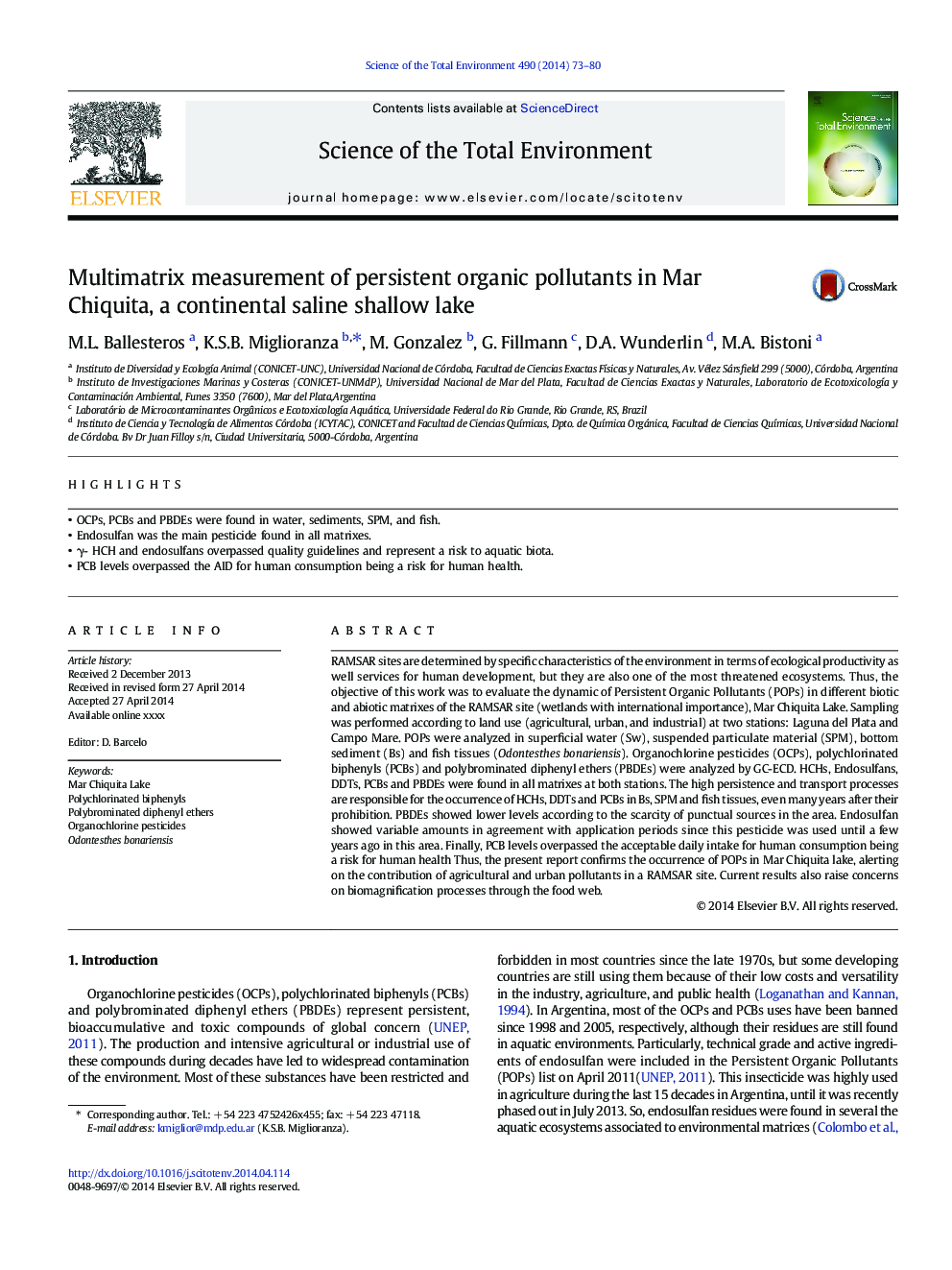| Article ID | Journal | Published Year | Pages | File Type |
|---|---|---|---|---|
| 6328995 | Science of The Total Environment | 2014 | 8 Pages |
Abstract
RAMSAR sites are determined by specific characteristics of the environment in terms of ecological productivity as well services for human development, but they are also one of the most threatened ecosystems. Thus, the objective of this work was to evaluate the dynamic of Persistent Organic Pollutants (POPs) in different biotic and abiotic matrixes of the RAMSAR site (wetlands with international importance), Mar Chiquita Lake. Sampling was performed according to land use (agricultural, urban, and industrial) at two stations: Laguna del Plata and Campo Mare. POPs were analyzed in superficial water (Sw), suspended particulate material (SPM), bottom sediment (Bs) and fish tissues (Odontesthes bonariensis). Organochlorine pesticides (OCPs), polychlorinated biphenyls (PCBs) and polybrominated diphenyl ethers (PBDEs) were analyzed by GC-ECD. HCHs, Endosulfans, DDTs, PCBs and PBDEs were found in all matrixes at both stations. The high persistence and transport processes are responsible for the occurrence of HCHs, DDTs and PCBs in Bs, SPM and fish tissues, even many years after their prohibition. PBDEs showed lower levels according to the scarcity of punctual sources in the area. Endosulfan showed variable amounts in agreement with application periods since this pesticide was used until a few years ago in this area. Finally, PCB levels overpassed the acceptable daily intake for human consumption being a risk for human health Thus, the present report confirms the occurrence of POPs in Mar Chiquita lake, alerting on the contribution of agricultural and urban pollutants in a RAMSAR site. Current results also raise concerns on biomagnification processes through the food web.
Keywords
Related Topics
Life Sciences
Environmental Science
Environmental Chemistry
Authors
M.L. Ballesteros, K.S.B. Miglioranza, M. Gonzalez, G. Fillmann, D.A. Wunderlin, M.A. Bistoni,
